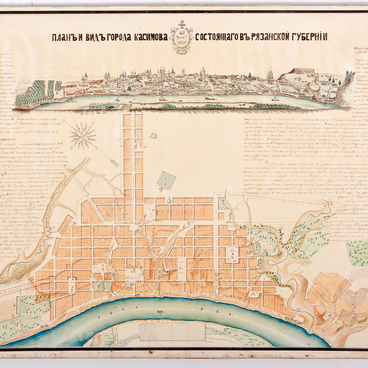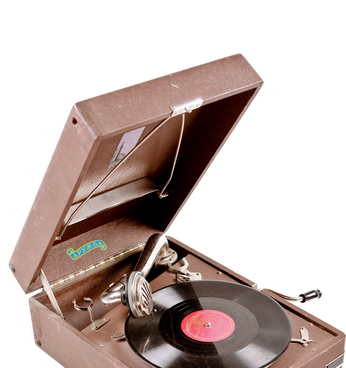The collection of the Kasimov Museum-Reserve contains a cast-iron stove made in Germany at the beginning of the 20th century. Previously, it was situated in one of the merchant houses located on the territory of the former Pushkarskaya settlement of Kasimov. Most likely, local merchants brought it from abroad.
Cast iron was a durable but expensive material, so only rich merchants could afford such a stove. The stove had a round shape and four legs. The carcass was decorated with floral ornament, and an embossment resembling a coat of arms was placed in the upper part.
The small windows on the doors were made of mica instead of heat-resistant glass:
it was more transparent, clearer and let in light better. When the fire was burning, the windows illuminated the room.
By the end of the 19th century, manufacturers learned to give a cast-iron stoves different shades. Some craftsmen decorated the objects using French enamel — dense and bright-colored paint.
Most cast-iron stoves were produced in Europe, especially a lot of factories were located in Germany and France. Each company had its own style by which one could determine where the stove was manufactured. Over time, the craftsmen began to decorate stoves with lush carved decor — they began to resemble tiled stoves of the 19th century that were decorated with carved tiles.
In the middle of the 20th century, the craftsmen began to use steel to manufacture stoves: it warmed up faster than cast iron, but also it cooled down faster. For additional decoration of steel stoves craftsmen started to use other materials: for example, copper and brass were used for handles and doors, and decorative elements of the stove were covered with nickel.
The stove has the brand of the manufacturer — Junker und Ruh. The German company was founded on February 1, 1870, in Karlsruhe in the southwest of Germany. It produced steel and cast iron products: irons, sewing machines, fireplaces, and stoves. During World War I, the factory produced weapons, screws, and parts of submarines and other items for the battlefront. During World War II factory in Karlsruhe came under fire and part of the buildings was destroyed. The reconstruction was carried out only after the war. In 1975, the company ceased to exist.
Cast iron was a durable but expensive material, so only rich merchants could afford such a stove. The stove had a round shape and four legs. The carcass was decorated with floral ornament, and an embossment resembling a coat of arms was placed in the upper part.
The small windows on the doors were made of mica instead of heat-resistant glass:
it was more transparent, clearer and let in light better. When the fire was burning, the windows illuminated the room.
By the end of the 19th century, manufacturers learned to give a cast-iron stoves different shades. Some craftsmen decorated the objects using French enamel — dense and bright-colored paint.
Most cast-iron stoves were produced in Europe, especially a lot of factories were located in Germany and France. Each company had its own style by which one could determine where the stove was manufactured. Over time, the craftsmen began to decorate stoves with lush carved decor — they began to resemble tiled stoves of the 19th century that were decorated with carved tiles.
In the middle of the 20th century, the craftsmen began to use steel to manufacture stoves: it warmed up faster than cast iron, but also it cooled down faster. For additional decoration of steel stoves craftsmen started to use other materials: for example, copper and brass were used for handles and doors, and decorative elements of the stove were covered with nickel.
The stove has the brand of the manufacturer — Junker und Ruh. The German company was founded on February 1, 1870, in Karlsruhe in the southwest of Germany. It produced steel and cast iron products: irons, sewing machines, fireplaces, and stoves. During World War I, the factory produced weapons, screws, and parts of submarines and other items for the battlefront. During World War II factory in Karlsruhe came under fire and part of the buildings was destroyed. The reconstruction was carried out only after the war. In 1975, the company ceased to exist.


